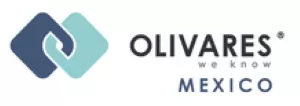Over 20 years ago, derived from the innumerable and uncontainable violations of pharmaceutical patents and for publicity purposes of the patents that protect allopathic medicines, on 19 September 2003, the Decree reforming the Regulation of Supplies for Health and the Regulation of the Industrial Property Law, published in the Official Gazette of the Federation, by means of which fraction IV was added to article 167 and article 167 bis of the Regulation of Supplies for Health, and to article 47 bis of the Regulations of the Industrial Property Law, introduce the Gazette of Allopathic Medicines with a Valid Patent into the scope of the linkage system, whose publication will be carried out according to the active substance or ingredient.
The reason for this reform was to create a linkage, cooperation and communication system between Mexico's Ministry of Health (COFEPRIS), in charge of, among other functions, granting marketing authorisations for the import, production, storage and commercialisation of allopathic medicines, and the Mexican Institute of Industrial Property (IMPI), empowered to confer and protect industrial property rights, among which are the temporary privileges of exclusive use of inventions through the granting of patents.
This system can be summarised in the obligations of both authorities: IMPI to publish every six months (February and August) a Gazette of Allopathic Medicines with Patents in Force, including those product patents according to their active ingredient, excluding patents for production processes and formulation processes; and COFEPRIS issuing the opinions that IMPI requires regarding the scope of protection of the patents listed in the Gazette.
The intellectual property authority had sustained a limited and erroneous interpretation of article 47 bis of the Regulations of the former Industrial Property Law, since IMPI only included in the first copies of the Gazette of Allopathic Medicines with Patents in Force those patents that protect the active principle per se, in contravention of the literal interpretation of sthisaid regulatory precept that admits the inclusion of any patent for allopathic medicines (products) as long as they are not those related to processes, whether they are processes of production or drug formulation.
Title holders of patents granted to allopathic medicines were forced to defend their intellectual property rights in court for the listing of formulation patents.
Whereas, COFEPRIS is obliged to review this list of product patents and grant registrations to the holders or licensees of the relevant patents, or, as the case may be, to suspend or deny marketing authorisations for the active ingredient patents published in the Gazette until that the validity of these patents ends, when the applicants for marketing authorisations are different from the holders of the published patents, and, alternatively, it will review the list of products listed in the Gazette according to their active ingredients.
From the foregoing, it is evident that, if the claims of a patent that meets the requirements of article 47 bis are not published, its owner will be irreparably affected, as this situation will be comparable to a lack of knowledge of the right of exclusiveness granted by the patent in question and the preventive nature of the linkage system.
There are more than 60 precedents issued by district judges and confirmed by collegiate circuit courts in Mexico City, and OLIVARES filed more than 90% of those cases in which the courts decided that formulation patents should be included in the list referred to in article 47 bis of the Regulations of the Industrial Property Law regarding allopathic medicines, as the literal and harmonic interpretation of this regulatory precept does not admit any exclusion, except for those patents that protect processes, whether of production or of drug formulation.
In the above-mentioned litigation, the importance and eminently preventive objective of the linkage system implemented in article 47 bis of the Regulation of the Industrial Property Law and 167 bis of the Regulation of Health Supplies was insisted on, because if IMPI is not in a position to observe the formulation patents, prior to the granting of the corresponding marketing authorisation, the authority will not comply with the preventive objective of the linking system, consisting of avoiding the granting of marketing authorisations that infringe or fall within the scope of protection of current patents of allopathic medicines.
Furthermore, it was mentioned during these trials that IMPI granted marketing authorisations to allopathic medicines, not to the active ingredients by themselves. Therefore, if allopathic medicines are subject to patent protection from its active ingredient, its formulation or the use of the medicine to treat a certain disease in particular, this protection cannot be ignored, as it would not only contradict patent law but the linkage system could not fulfill the function for which it was created.
Currently, pharmaceutical formulation patents are included in the Linkage Gazette without the need for litigation. In this way, IMPI not only eliminated the need for patent holders to spend money and time on legal actions to have this type of patent included in the Gazette, but also improved the application of the linkage system for the prevention of violations of exclusivity rights.
Second-use patents are still rejected for publication by IMPI, despite the fact that IMPI has lost most of those cases and several new-use patents have been successfully listed to date, all by court order, under the argument that the use patent figure is not regulated or recognided in the Intellectual Property Law and its Regulations, that a use patent does not provide protection to a drug and that the active ingredient according to which the patent can be referenced does not have protection in Mexico as it is in the public domain.
The Mexican linkage system contemplates the Bolar exemption, in which applicants for generic medicines can file their marketing authorisation application and use patented products to carry out and submit studies, tests and clinical analyses necessary to obtain an authorisation or marketing authorisation, without any responsibility for patent infringement. Three years must pass before the end of the validity of the patent listed in the Gazette, in the case of chemical-based medicines, and eight years in the case of biotechnological medicines and, of course, that the use is limited to obtaining said authorisations.
The patent holder in the regulatory provisions of the system is never taken into account; the linkage system revolves around drug patents and the only subject that is not mentioned in the entire system is the owner of the patent. It is expected that this will be corrected in the regulations of the new Federal Law for the Protection of Industrial Property, as both the United States-Mexico–Canada Agreement (USMCA) and the Mexican courts have perceived the lack of a guarantee of hearing for the patent holder in the linkage system.
The applicant for a marketing authorisation must attach to the application the documentation that demonstrates that it is the owner of the "patent, of the substance or active ingredient or that it has the corresponding license" and, alternatively, according to the list of products (Linkage Gazette), must declare under oath to tell the truth that it does not invade patent rights.
In this way, once the applicant submits the information on the allopathic medicine for which registration is requested before COFEPRIS, if the direct reference is the active ingredient by its generic name and if the applicant for the marketing authoridation files the documentation that proves to be holder or licensee of the patent that covers the active ingredient, the marketing authorisation will be granted. If this is not the case, the regulation itself establishes that, alternatively, the technical consultation to the IMPI "intergovernmental consultation" must be followed, so that it can carry out an analysis of the state of the patents related to the medicine for which the marketing authorisation is to be obtained and the list of products (Linkage Gazette).
Based on the information provided by COFEPRIS, IMPI must indicate whether these product characteristics fall within the scope of the published patents and other relevant patents that may be invaded by the product subject to approval, indicating the patent number, title and validity and attaching copies of the relevant claims of the corresponding patents, indicating in turn if they are patents of active ingredients (polymorphs) or formulations or compositions or use, and specifying the owner, validity, if there is a licence or change of owner and the administrative status of the patent.
If, according to the information provided by COFEPRIS, there is no patent published in the Gazette or another relevant placr, which may be infringed or coincides with the product subject to approval, IMPI's response must be that there is no relevant patent.
If IMPI's response is that there is a relevant patent, COFEPRIS must reject or deny the application for the marketing authorisation, if the patents have a term of more than three years prior to their expiration date. If the application was in the past three years of validity of the patents, COFEPRIS must suspend or grant the marketing authorisation until the expiration of the validity of the patent cited by IMPI.
The opinion of the National Chamber of the Pharmaceutical Industry (CANIFARMA) will be taken into consideration; before the respective publication of the Gazette is verified, in terms of the provisions that empower IMPI to carry it out, the opinion of CANIFARMA is taken into account, which integrates national and generic pharmaceutical industry associations such as the National Association of Drug Manufacturers and the Mexican Association of Pharmaceutical Research Industries.
Compliance with this provision is given through the issuance of opinions from the associations that make up CANIFARMA, including requests made by some laboratories associated with any of them, and including requests in the Gazette of Medicines that is communicated by IMPI to the members of CANIFARMA.
The update of the list of medicines in the corresponding Gazette will be carried out every six months, and the update will replace the publication immediately prior to it and will contain the complete list, notwithstanding that IMPI, if necessary, can issue an extraordinary publication before the indicated period.
Recently, the Mexican regulatory agency empowered to approve drugs, medicines and other regulated products and services in Mexico, COFEPRIS, published the following on its website, in connection with Patent Linkage Regulation in Mexico: an updated list of generic and biosimilar applications, including general information, such as the date of application, applicant name, generic name, pharmaceutical form and publication date, and a format to oppose the generic or biosimilar applications based on an existing patent or patents in force.
It is encouraging to see the regular updating of the list of generic and biocomparable applications, a practice that had been on pause over the past couple of years. It is considered a positive development that COFEPRIS resumed this activity, in compliance with its publicity and transparency obligations established in the legislation, mainly in the Health Law.
Regarding the second publication, the "opposition format", COFEPRIS appears to be exploring ways to comply with the notice requirement established in the USMCA as a condition of the Mexican Patent Linkage Regulation.
It was not until now that the Mexican Patent Linkage Regulation even contemplated the notice of the patent holder during the patent linkage process.
COFEPRIS seems to be demonstrating good will with the new opposition process currently under comment, and it appears to be attempting to comply with the USMCA notice obligation in linkage regulation. However, when analysed, it seems that the publication of the process on its website does not comply with the required administrative and legal formalities to be valid and have legal effect.
In addition, on in-depth review, the publications would not fulfil the legal standard of proper notice, as these publications carry the burden of detecting and alerting COFEPRIS to an eventual patent violation to the patent holder. Whereas, in the patent linkage system, COFEPRIS has the obligation to observe the patents listed in the Linkage Gazette and initiate the preventive administrative mechanism of patent linkage.
The obligation provided in the USMCA in connection with patent linkage should consist of the proper notification by the authorities (COFEPRIS or the Mexican Patent Office, or both) to the patent holders, prior to the approval of the generic or biosimilar application. That is, the authority is the one who has the obligation to notify the patent holder, not the other way around.
In essence, the publications suggest an opposition system. The patent holder has the high burden to detect and alert COFEPRIS within 10 working days of an eventual violation of the patent listed in the Linkage Gazette, by comparing a list of generic and bio-comparable applications with limited information regarding the formulation and specifics of the approval application to have enough elements to claim an eventual patent violation. Certainly, this is not a notification system wherein a proceeding impacting an interested party has been initiated by the authority, which would appear to be the rationale behind the notice obligation provided in the USMCA.
Originally published by IAM.
The content of this article is intended to provide a general guide to the subject matter. Specialist advice should be sought about your specific circumstances.


